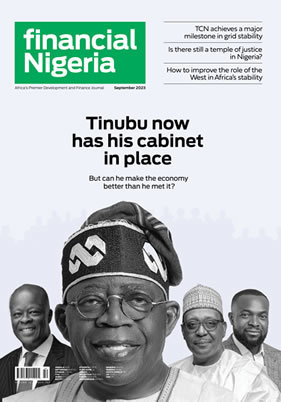
Akachi Ngwu, Author, Entrepreneur
Subjects of Interest
- Communications
- Entreprenuership
- Public Relations
Lagos State bus reform project poised to revamp transit advertising 15 Feb 2019
The extensive Bus Reform Project of the Lagos State Government has the potential to transform transit advertising in the state. The government plans to launch the project in March with 820 high and medium-capacity buses. It is an initiative that Lagos State Governor, Akinwunmi Ambode, says would redefine public transportation and boost the state's economy.
Through partnership with the private sector, the government intends to increase the supply of buses to 5,000 over time, and build modern terminals and transport infrastructure to ease mobility for 12 million people using public transportation in Lagos. The Ikeja Bus Terminal, which was inaugurated last year, is part of the Bus Reform Project. The expansive Oshodi Transport Interchange is expected to be completed in the first quarter of 2019. There are additional 11 bus terminals being built in strategic locations in the Lagos metropolis. The government says the project is modelled after modern terminals in Europe.
On March 17, 2008, the Lagos State government commenced the Bus Rapid Transit (BRT), a public-private partnership of the Lagos Metropolitan Area Transport Authority (LAMATA) and supported by the World Bank. The BRT system, initially provided a convenient and faster means of public transportation than the regular bus services, has become inefficient. The number of BRT buses has reduced considerably, creating long queues at the bus terminals. The new buses to be introduced into the system could help alleviate the travails of mass transit passengers.
From the point of view of out-of-home (OOH) advertising companies, the increase in the number of buses will present an opportunity to harness additional touchpoints for strategic brand marketing. Buses and bus terminals are very effective in outdoor advertising. The buses provide exterior and interior ad spaces, while the terminal buildings and surroundings are also platforms for adverts. The process of placing ads on public transportation areas and in public transportation vehicles is what is referred to as transit advertising.
Airports, railways stations, bus terminals, street lights, toll plazas, buses, taxes, and trains are ideal places for transit advertising because they provide high visibility for brands on a daily basis. This form of outdoor advertising is effective because it is hard to ignore. For example, it is easy for some people to change channels when a commercial is aired on television or radio that they do not want to watch or listen to. But passengers on a bus or at a bus terminal are captive audiences of transit advertising.
Road infrastructure renewal projects of the Lagos State government will also play a huge role in unlocking transit advertising opportunities for outdoor advertisers. With Gross Domestic Product (GDP) estimated at $91 billion, Lagos State remains the economic hub of the country. Expanding the state's infrastructure stock and facilitating the movement of people and goods will further boost economic activity. My prediction is that outdoor advertising spend will experience a shift from the utilization of billboards to transit advertising as advertisers begin to maximize their advertising budgets for sustained return on advertising spend (ROAS).
Although OOH advertising spending in 2017 dropped by 15 percent to N24.6 billion revenue, from N28.8 billion recorded in 2016, according to MediaReach OMD, 2019 could present an opportunity for a better outlook for the market. Lagos alone accounts for 50 percent of the Nigerian advertising market. This means that what happens in Lagos can pretty much affect the entire market performance.
But providing the buses, the public infrastructure and implementing the Bus Reform Project is not enough to change the OOH market in Lagos. Critical to getting transit advertising in Lagos to be effective in terms of providing premium outdoor advertising services lies with the methodology of selecting service providers for each of the bus terminals and hubs. A selection process driven by international best practices and underpinned by competence, technical knowledge and professional track record rather than cronyism is key to repositioning the OOH industry.
Perhaps, the government could look at using a competitive bidding process to select outdoor service providers that will deploy signages across all the terminals and hubs. Furthermore, the system could also run better if different outdoor service providers are allowed to deliver transit advertising at the various terminals.
Transit advertising is considered a key element in the OOH advertising ecosystem. It is also evolving beyond traditional print advertisement as new technologies enable advertisers to include digital signage, such as LCD and LED screens. A number of the existing BRT buses have LCD screens in them. There are also interactive advertisements that allow customers to scan a barcode with their smartphones. These new technologies also facility easier traffic measurement.
If it were a country, Lagos would be Africa's 7th largest economy. It is high time the city upgraded its scenic landscape, and by doing so it will provide leverage to transit advertising, which will not only add value to the economy but also offer campaign message amplification to the commuting public.
Latest Blogs By Akachi Ngwu
- Rising competition and sponsorship trends in Nigerian beer market
- What recent celebrity endorsements in Nigeria mean
- Sponsorships as effective brand communication tool for SMEs
- How design thinking drives brand marketing and engagement
- Utilising storytelling for effective marketing communication






